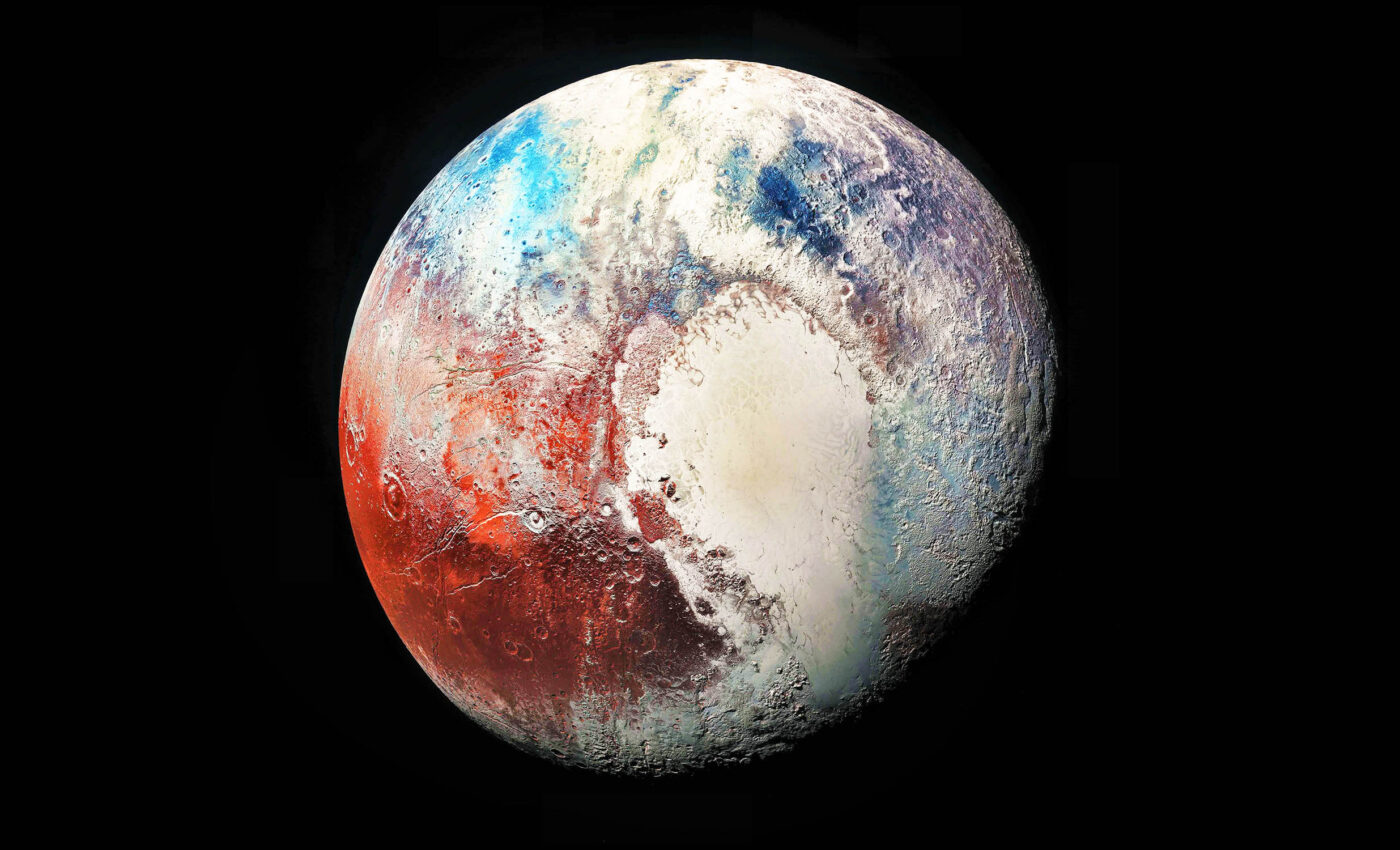
Pluto may not be a real planet, but it has a real big ocean
Astronomers are diving deeper into the mysteries of Pluto, revealing compelling evidence of a vast liquid water ocean hidden beneath the dwarf planet’s icy surface.
The findings, published in the journal Icarus, provide new insights into the internal structure and composition of this distant world.
What lies in the ocean beneath the ice?
Alex Nguyen, a graduate student in Earth, environmental and planetary sciences at Washington University in St. Louis, led this new research.
Along with his team, they used mathematical models and images from NASA’s New Horizons spacecraft to investigate Pluto’s subsurface ocean.
Co-authored by Patrick McGovern of the Lunar and Planetary Institute in Houston, the study sheds light on a long-standing debate about the possibility of liquid water on Pluto.
Pluto is much more than a frozen rock
Clyde Tombaugh discovered Pluto in 1930. Initially classified as the ninth planet in our solar system, the International Astronomical Union (IAU) reclassified Pluto as a dwarf planet in 2006.
Orbit and size
Pluto orbits the Sun at an average distance of 5.9 billion kilometers, taking about 248 Earth years to complete one orbit. It is smaller than Earth’s moon, with a diameter of about 2,372 kilometers.
Composition and moons
Pluto consists mainly of rock and ice. Its surface features a variety of landscapes, including mountains, valleys, plains, and an ocean that we’ll learn more about soon. The dwarf planet has a thin atmosphere composed primarily of nitrogen, methane, and carbon monoxide.
Pluto has five known moons: Charon, Nix, Hydra, Kerberos, and Styx. Charon, the largest of these moons, is nearly half the size of Pluto itself.
Pluto’s ocean fuels cryovolcanoes
Traditionally, planetary scientists believed that Pluto’s extremely cold surface temperature of -220°C, which causes even gases like nitrogen and methane to freeze solid, would make the existence of liquid water impossible.
As Nguyen explains, “Pluto is a small body. It should have lost almost all of its heat shortly after it was formed, so basic calculations would suggest that it’s frozen solid to its core.”
However, recent evidence, including the presence of cryovolcanoes that eject ice and water vapor, has led prominent scientists like William B. McKinnon, a professor at WUSTL, to suggest that Pluto likely harbors an ocean of liquid water beneath its icy shell.
Nguyen notes, “Although there is still some debate, it’s now generally accepted that Pluto has an ocean.”
Modeling Pluto’s subsurface secrets
Nguyen and McGovern’s study delves deeper into the properties of Pluto’s hidden ocean. They created mathematical models to explain the cracks and bulges in the ice covering the Sputnik Platina Basin.
This basin formed billions of years ago when a meteor collided with Pluto. Their models suggest that the ocean lies beneath a water ice shell 40 to 80 kilometers (25 to 50 miles) thick.
This thick layer of ice likely acts as a protective blanket, preventing the inner ocean from freezing solid.
The researchers also calculated the probable density or salinity of the ocean based on the fractures observed on the surface.
“We estimated a sort of Goldilocks zone where the density and shell thickness is just right,” Nguyen explains.
Their findings suggest that Pluto’s ocean is, at most, about 8% denser than Earth’s seawater, comparable to Utah’s Great Salt Lake. If humans could somehow reach Pluto’s ocean, they would effortlessly float.
Significance of Pluto’s ocean
The discovery of a liquid water ocean on Pluto has far-reaching implications for our understanding of the outer reaches of the solar system.
As Nguyen passionately states, “From my perspective, it’s a planet.” Regardless of its official classification, Pluto’s unique characteristics and potential for harboring liquid water make it a fascinating subject for scientific study.
While space agencies have no immediate plans to revisit Pluto, the findings of this study lay the groundwork for future exploration and research.
The discovery of a liquid water ocean beneath Pluto’s icy surface challenges our understanding of this distant world and opens up new avenues for planetary exploration.
Pluto’s ocean is a game changer for planetary science
In summary, as we continue to study Pluto and unravel its mysteries, we must keep an open mind about the possibilities that lie hidden within the depths of our solar system.
This stunning research by Alex Nguyen and Patrick McGovern highilghts Pluto’s internal structure and composition and invites us to reconsider our assumptions about the potential for liquid water and perhaps even life beyond Earth.
As we look to the future of space exploration, Pluto’s hidden ocean serves as a compelling reminder that the universe still holds many secrets waiting to be discovered.
The full study was published in the journal Icarus.
—–
Like what you read? Subscribe to our newsletter for engaging articles, exclusive content, and the latest updates.
Check us out on EarthSnap, a free app brought to you by Eric Ralls and Earth.com.
—–













